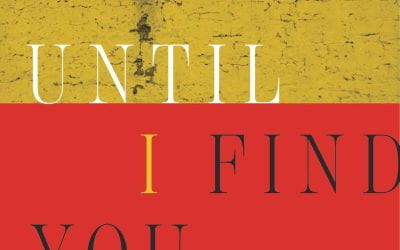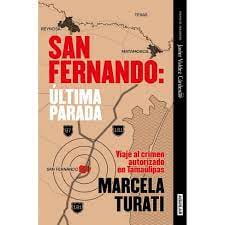A Review of The Pen, the Sword, and the Law: Dueling and Democracy in Uruguay
David Parker’s book on dueling in Uruguay was worth the wait. Along with his work on the history of the middle classes in Latin America, in the last two decades Parker had published several articles and book chapters that advanced our knowledge about the modern adoption of that violent ritual in the region.

The Pen, the Sword, and the Law: Dueling and Democracy in Uruguay by David Parker (Montreal: McGill-Queen’s University Press, 2022.)
The Pen, the Sword, and the Law is a key contribution because Uruguay has an importance in the history of dueling in Latin America that far outweighs its geographical size. From the mid-19th century until the late 20th century, dueling was shaped the narrative of Uruguayan politics. Political and intellectual elites, including several presidents and candidates for the presidency, frequently engaged in duels. A 1920 law made dueling legal if preliminaries and combat followed the dictates of established codes—in other words, if it did not look too much like a run-of-the-mill knife fight among lower-class men.
The last duel recorded by Parker’s database took place in 1971, used pistols and involved Líber Seregni, a central figure in the history of the Frente Amplio (the leftist coalition that ended the old partisan duopoly of Blancos and Colorados) and in the struggle for democracy in the country. One of the paradoxes of this story is that the Frente Amplio was instrumental in the 1992 abolition of the 1920 law, after another important figure of democracy, Federico Fasano, was challenged to combat by a policeman for his journalistic work.
Parker offers an insightful approach that does not smooth over the contradictions in the ideology that justified dueling. The most salient of those is that a practice that used brute force to solve disputes emerging from public life could be defended as a foundation of democracy. Without losing a sense of irony, Parker builds a balanced narrative sustained by extensive research. Finding evidence of duels in Uruguay over more than a century was no easy feat. As explained in the methodological appendix, the press was the primordial source for the book, as Uruguayan duelists loved to publish in the newspapers the results of negotiations and combats between elite men. They did this even during periods when the practice was illegal and, sometimes, even persecuted by authorities (not the same thing, as the book makes clear).
Parker also used judicial archives, finding several written testimonies of the complex negotiations that preceded or prevented a duel. But many encounters were kept secret and not prosecuted. The research was complicated, in other words, by the fact that the duel in Uruguay, as in many other countries, existed in an uncertain, shifting normative system parallel to the codified law but was not in opposition to it. In contrast with the moral rules that pushed working-class men to fight in defense of their reputation, dueling was an upper-class custom that its practitioners did not consider barbaric or worthy of persecution, but held as modern and deserving of legal or extralegal protection. The public men who read and sponsored codes of dueling were often the same ones who wrote and voted for the penal legislation of the country. They had no qualms about lying to the police, hiding or crossing the Rio de la Plata to be able to fight duels in Argentina, yet at the same time prided themselves on being the highest examples of masculine virtue.
One advantage of these historical subjects, from the historian’s perspective, is that they loved to speak, write and hear themselves. As a result, Parker can mine a large archive of press and parliamentary debates, anecdotes, letters and even some interviews—one of them with another president and duelist, Julio María Sanguinetti. These are very quotable men; they can be very explicit about their values but also, sometimes, involuntarily laughable for their lack of awareness of the privileges behind their claims of moral superiority.
Parker acknowledges that the normative system that made the duel possible was based on the exclusion of women and lower-class men. As he points out, that has been established by other historians of the practice, most notably Sandra Gayol, for Argentina, other scholars of Latin America (including this reviewer), and works on the European history of the practice. This scholarly consensus allows Parker to focus on the specificity of the practice of the duel and avoid getting lost in the weeds of the history of honor, a broad category often invoked by his subjects but rarely defined.
While class and gender are inevitable parameters to understanding honor, Parker focuses on the history of the practice itself, offering an interpretation of its evolution that is centered on politics. In a nutshell, his argument is that dueling was a constitutive element of the history of the Uruguayan public sphere as it emerged from the instability and violence of the early national period and eventually supported the development of democratic and legal means of conflict resolution, even defeating the regressive forces of militarization, political violence and dictatorship. The duel was not, he smartly notes, just the moment of combat between two grown-up men in short sleeves holding swords or pistols. More important to the understanding of its political function, was the complex web of friendships, enmities, negotiations and reconciliations that circled around the possibility of a duel. That broad realm allowed for the preservation of free speech, even if it exposed it to the occasional bullying of eager challengers, like Italian journalist Salvatore “Totó” Nicosía, or military men unhappy with journalistic coverage of their activities. The potentiality of a duel prevented libel and moderated public discourse. Even former president and icon of the Latin American left, José Mugica, thought so, reflecting that “Some things you need to settle that way and not some other way, conversing and blah, blah, blah, because it’s really easy in this country to run your mouth” (162).
Parker, in sum, tends to agree that the duel contributed to the consolidation of democracy in Uruguay. But he also acknowledges that the duel was also an instrument to preserve impunity and privilege. Nevertheless, his focus on a modern, open public sphere as the condition for democratic politics is persuasive, resonating with more recent historiography that, for Latin America, proposes a broader approach to political history. One way to characterize this scholarship is to point out its refusal to focus only on great men and prestigious intellectuals, and its interest in the rules and conditions of public speech as a social phenomenon, not just as a vehicle for power or ideology. Uruguay is an attractive test case for a public sphere-centered political history. This book offers an engaging and productive way to approach that history from what would appear to be a side angle (the duel) but is in reality its central manifestation (the role of the press in public life).
A rigorous and smart book like this is always open to the unfair second-guessing of readers (like this reviewer) who are fascinated by the evidence but can also imagine that more could have been done with it. Two possibilities occurred to me as I read it. One pertains to the violence that was part of the environment that nourished dueling. Knife-fighting, civil war and foreign invasion were unavoidable elements of 19th-century Uruguayan social and political history. Politicians and journalists who liked to quote European rulebooks must have been aware of this other violence that surrounded them. They were loath to mention that context because they saw lower-class violence as essentially rural, primitive and contrary to liberal values.
In the 20th century, the context changed. Militarism and repressive dictatorial policies justified themselves with references to the much-less lethal revolutionary forces from the left. Yet the duel survived and, as we saw, was accepted by public men on the left of the political spectrum. Was the duel a way to scale back social and political violence, a synecdoche in which famous duelists represented broader forces? Or was it a way to perpetuate violence, by nurturing an ethos of physical courage?
The second occurrence of this appreciative reader is that delving into the gendered exclusions built into dueling might actually have helped strengthen the broader political argument of the book. Despite its high level of democracy and stability, Uruguay remains a country that, compared with others in the region, has a small representation of women in politics. Unlike those other Southern Cone countries, there has not been a female president in Uruguay. Not all female presidents are the same, of course, but their absence is a useful index. Despite efforts to create parity, women remain less than a quarter of the members of congress in Uruguay and are strongly underrepresented in other political, educational and business posts, as Victoria Gadea points out in El lugar de las mujeres uruguayas en los cargos de decisión. Can we say that this is also a product of the long history of dueling?
These questions should not detract from my general assessment of The Pen, the Sword, and the Law: this is an insightful, carefully crafted and clearly written book that guides readers into the history of Uruguay but also explores the larger implications of a perspective focused on social actors and the public sphere. That perspective can see with clarity both laws and real-life practices, speech and actions. In doing so, it builds an original and productive understanding of politics in history.
Pablo Piccato is Professor and Chair in the Department of History at Columbia University. His works on the modern history of Mexico include The Tiranny of Opinion: Honor in the Construction of the Mexican Public Sphere and, more recently, Historia mínima de la violencia en México.
Related Articles
A Review of Default: The Landmark Court Battle over Argentina’s $100 Billion Debt Restructuring
In February 2019, I found myself serving as the special attorney general for the then newly recognized interim government of Venezuela, tasked with addressing more than 50 claims before the U.S. courts stemming from the $140 billion debt inherited from Hugo Chávez and Nicolás Maduro.
A Review of Until I Find You: Disappeared Children and Coercive Adoptions in Guatemala
A student in my “Introduction to Cultural Anthropology” course at the University of Delaware approached me several weeks ago, after hearing about my long-term research in Guatemalan communities, to tell me that they were born there, in Guatemala.
A Review of San Fernando: Última Parada, Viaje al crimen autorizado en Tamaulipas
One of Mexico’s best investigative journalists, Marcela Turati, takes readers to terrorized and traumatized San Fernando, a town known for dozens of mass graves, and exposes the depths of criminal brutality and official corruption that hid the bodies and the truth for years.




